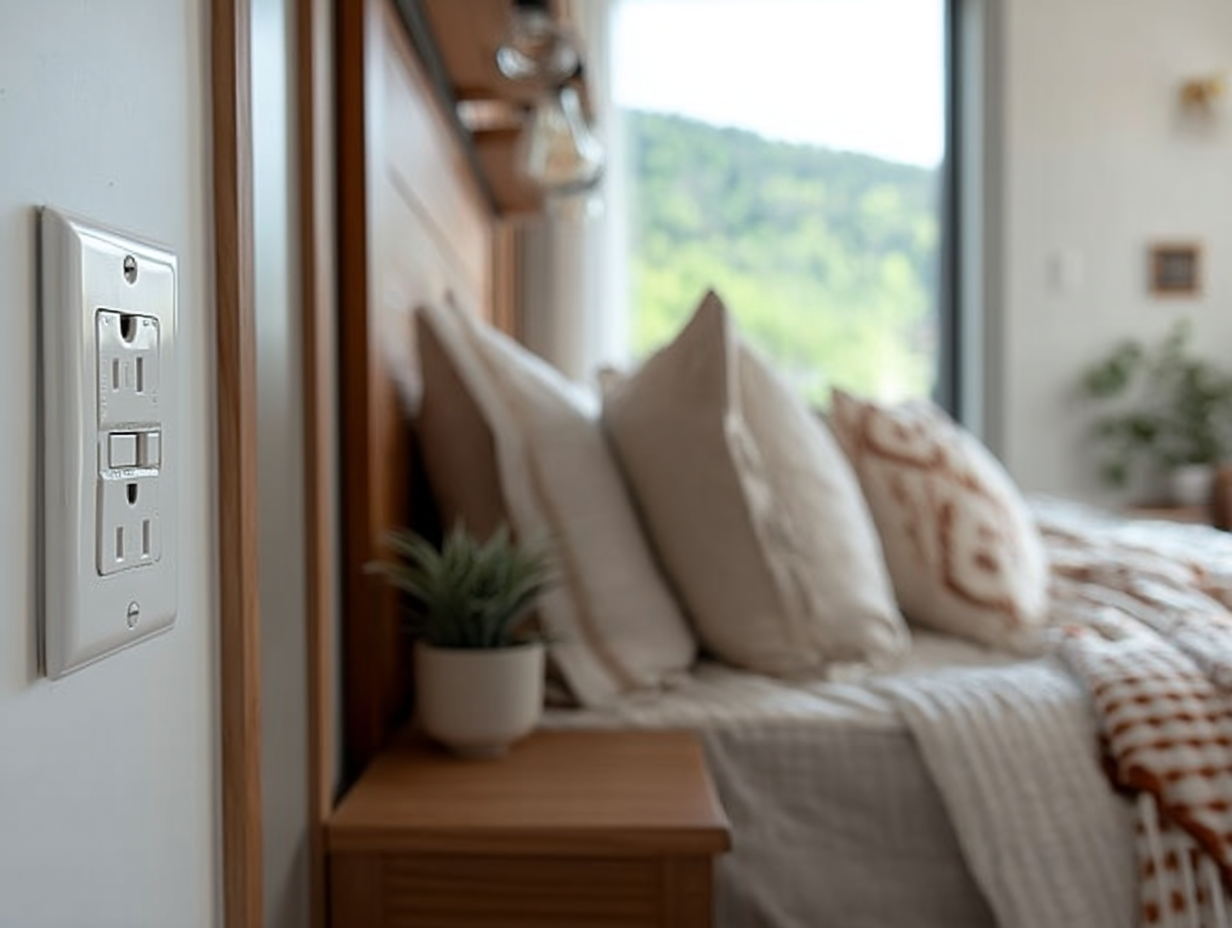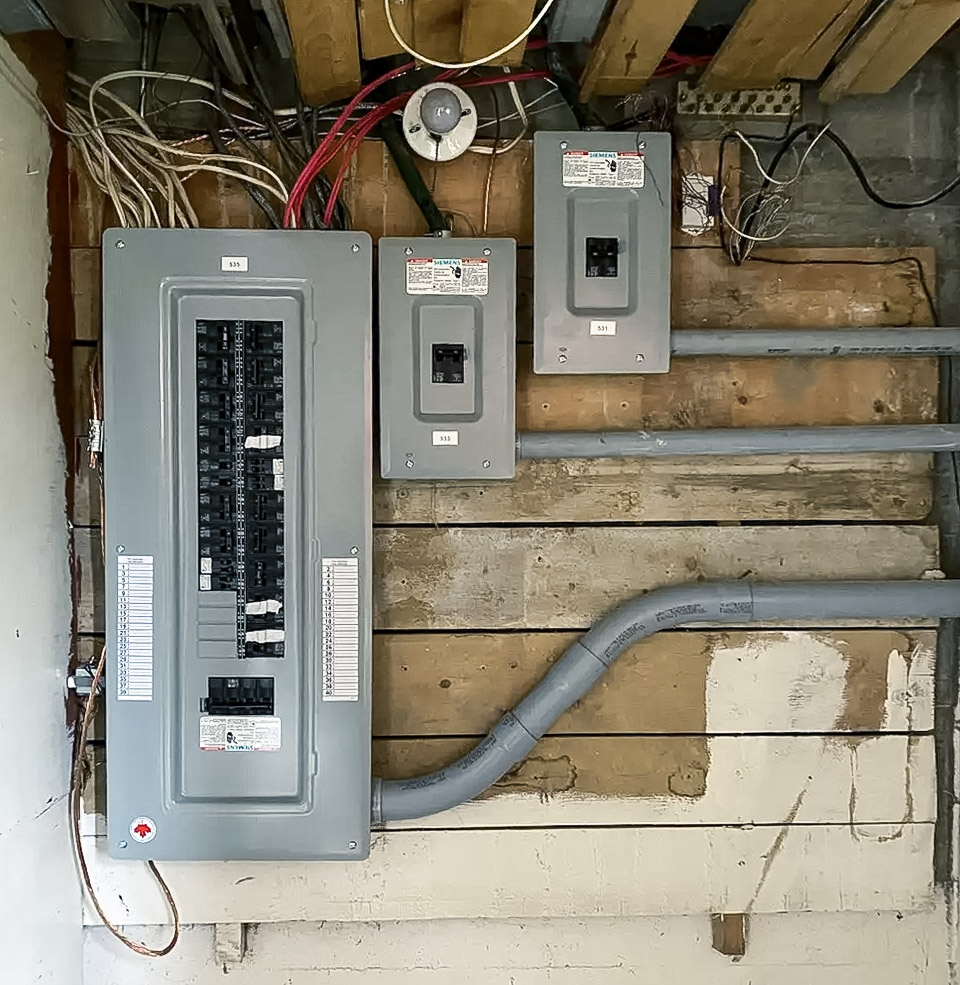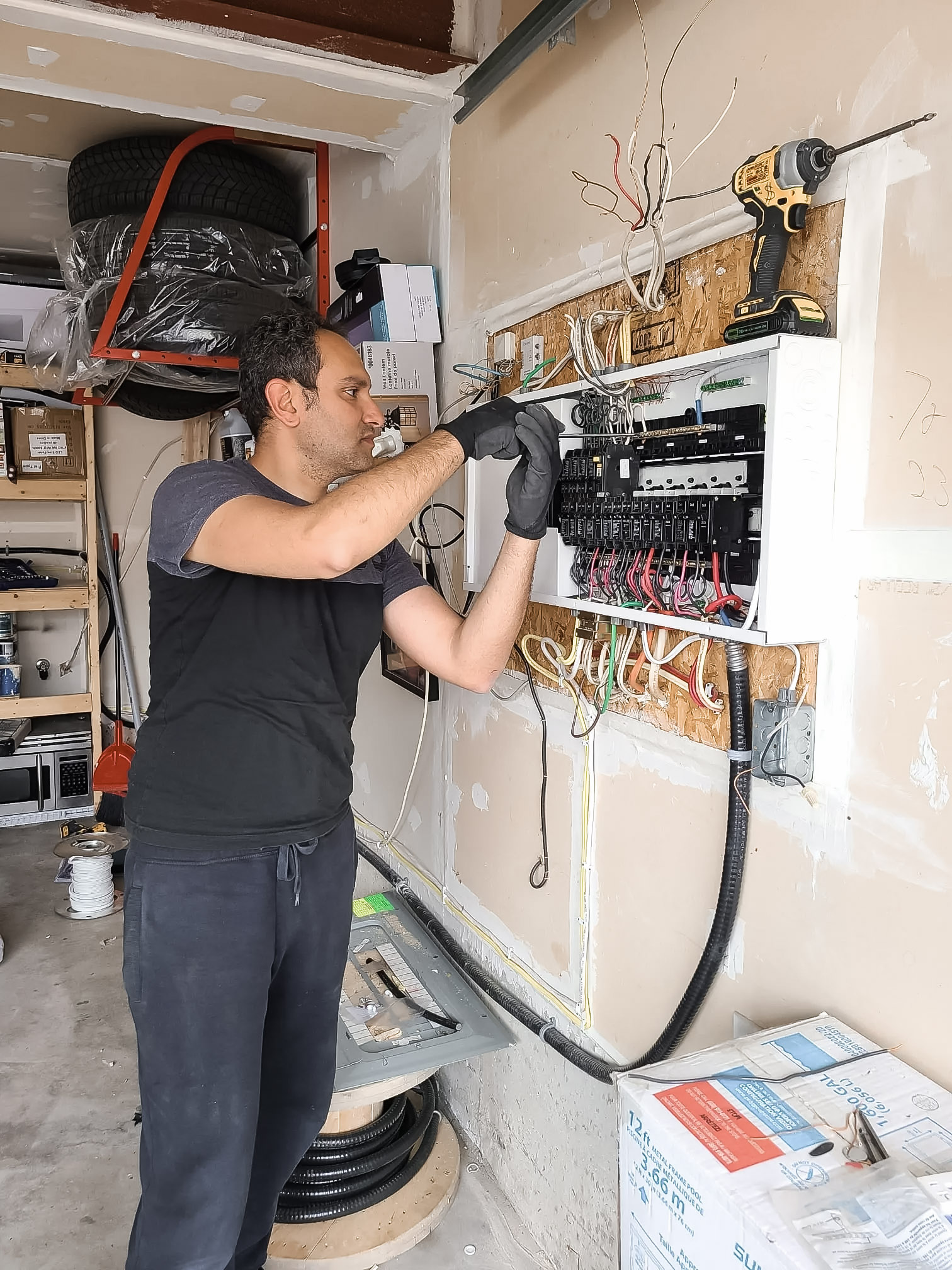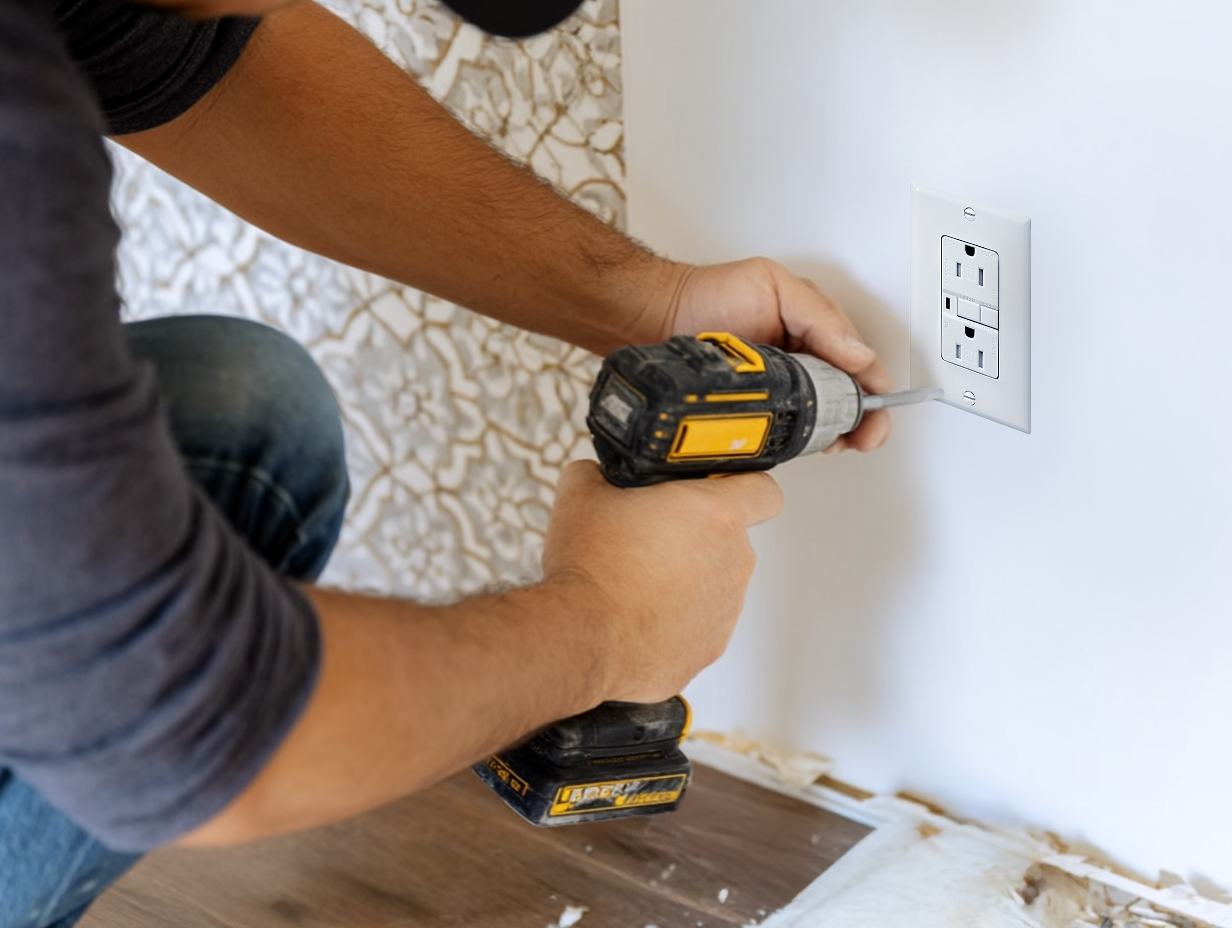Arc Fault Circuit Breakers: Why They’re Required in Bedrooms
By Editorial Team
Updated on May 22, 2025

What’s More Important Than Feeling Safe at Home?
With construction standards becoming increasingly strict—especially regarding electrical installations—the frequency of safety incidents has been decreasing. That’s something to celebrate! This progress is due in part to the requirement for arc-fault circuit interrupters (AFCIs) to protect most residential electrical outlets, including those in bedrooms.
Here are some questions we’ll answer in this article:
What role does an AFCI play in an electrical system?
Does an AFCI protect against overcurrents?
What are the requirements for installing an AFCI?
Quebec Electrical Code: AFCIs
Quebec’s Electrical Code: Arc-Fault Circuit Interrupters (AFCIs)

Source : RenoQuotes
In 2004, Quebec’s Building Code was updated to require AFCI installation on bedroom outlet circuits. Starting in 2019, this regulation expanded to cover most 120V (15 or 20 A) outlets in residential buildings.
Across Canada, AFCI requirements for electrical installations and wiring methods vary by province. If you live outside Quebec, be sure to check your province’s current codes and standards.
What Does an AFCI Do?
An arc-fault circuit interrupter (AFCI) detects wiring arcs and shuts off power quickly to prevent overheating and potential fires. It’s a highly effective tool for overcurrent protection.
AFCIs are used where GFCI (ground fault circuit interrupter) outlets are not required. GFCIs are typically found in bathrooms and kitchens. When combined with a standard breaker, GFCIs provide similar protection to AFCIs.
However, GFCI outlets aren’t ideal for major appliances like ovens or refrigerators, as they must be manually reset at the outlet. A GFCI breaker can be reset at the panel instead.
AFCIs are also beneficial for lighting circuits in most rooms of a house, including common areas in multi-unit buildings.
How Does an AFCI Work?
An AFCI detects arc faults using a sensor and shuts off the electrical flow to the affected circuit, isolating it from the rest of the system.
This protects that portion of the installation from overcurrents. The AFCI is installed in the electrical panel to safeguard the entire circuit.
What Is an Arc Fault?

Source : Deschênes Électrique Inc.
An arc fault occurs when electrical current follows an unintended path. For example, if a nail pierces a wire, current may escape and cause excessive heat—potentially leading to fire.
Possible arc fault causes include:
Rodents or insects damaging wiring
Improper wiring methods
Excess heat or humidity inside walls
Damaged or improperly installed outlets
Faulty electrical appliances
How to Install an AFCI

Source : ZAK Electric
Installing an AFCI is as simple as installing a standard breaker. Some models have a built-in adapter that connects directly to the neutral bar; others require manual attachment. Always follow the manufacturer’s instructions.
Important: In Quebec, only certified electricians are legally allowed to perform this kind of work. Electrical projects are regulated due to the risk they pose during and after installation.
In other provinces, requirements may vary, but electrical work remains one of the most dangerous DIY projects for homeowners.
Where Should You Install an AFCI?
AFCIs were first required in bedrooms but are now recommended (and often required) in many parts of the house. In Quebec, most circuits must be protected by AFCIs.
Exceptions where AFCIs are not mandatory:
Kitchens and bathrooms (especially outlets near sinks)
Sump pumps
Unfinished basements
Certain exterior outlets
In these areas, GFCI outlets are typically required to reduce the risk of electric shock.
Why Are AFCIs Required in Bedrooms?

Source : Espace Casa
Bedrooms were the initial focus because of their fire risk. Beds are often placed near outlets, and bedding or furniture can come into contact with them. The rule was introduced for safety reasons.
What Kind of Outlet Do You Need in Kitchens and Bathrooms?
In kitchens and bathrooms, most outlets must be GFCI-protected. These outlets prevent electrocution and reduce fire risk outside the circuit.
AFCI Problems: What to Do

Source : RenoQuotes
If your AFCI is malfunctioning, call a certified electrician right away. An expert is needed to diagnose the issue.
Common AFCI problems:
If your AFCI trips frequently and the cause isn’t obvious, it may be defective—or there may be a hidden arc fault.
AFCIs can also trip when connected to appliances with slight power fluctuations (e.g., power tools, microwaves, heaters, air conditioners). These aren’t dangerous, but the AFCI may interpret them as unsafe. You might need to use an outlet on a non-AFCI circuit for such devices.
Other causes of AFCI malfunctions:
Overloaded circuit
Faulty wiring methods
Damaged electrical panel
Exposure to moisture or mold
Worn-out cables
Repeated overloads that damaged the AFCI
Want to Learn More About Electrical Issues?
Read our article:
The 9 Most Common Electrical Problems
Who Can Repair a Faulty AFCI?
Always call a certified electrician to repair or replace an AFCI.
To simplify your search, use our contractor referral platform. We’ll connect you with certified electricians who can handle the job safely and professionally.
AFCI and Electrical Wiring – FAQ
Who Can Install an Outlet in Quebec?
What Are the Requirements for Electrical Panels in Quebec?
Accessible height (0.9–1.8 m from the floor)
Includes: GFCIs, breakers, surge protection, main grounding terminal
All components must comply (wiring, cables, breakers, box, etc.)
Must be installed by a certified expert
Residential panels must support at least 40 circuits (200 A)
Fuse boxes must be replaced with breaker panels
Wht are the Kitchen Outlet Standards in Quebec?
Looking for something else?
Related articles
The latest industry news, interviews, technologies, and resources.

Editorial Team
•26 Jul 2024
The world continues to change at a rapid pace as we become further technologically advanced. The rise in electric cars over the past few years shouldn’t be surprising as many engineers are looking for ways to create socially conscious and green-friendly technologies. Although these cars work towards saving the environment, what effect do they have on the wallet? Is charging an electric car cheaper than buying gas? What about long-term maintenance?

Équipe éditoriale
•28 Aug 2024
Although hidden behind the scenes, both fuses and circuit breakers run the central electrical operations while they serve to protect your home as well as your family. Both work to defend against an overloaded electrical circuit by interrupting the flow of electricity.

Editorial Team
•07 Nov 2023
Even though a brick wall is quite decorative by itself, perhaps it’s not enough and you’re unsatisfied with its blank appearance. Well, just a piece of advice, it is more difficult to hang things (art, shelves, lamps, etc.) on brick, but don’t be discouraged because it’s not impossible!

Editorial Team
•15 May 2025
There’s such a thing as a device that blows both cold and warm air—a heating and cooling heat pump. But, rest assured, there’s nothing sorcerous about it, it’s all about physics.

Editorial Team
•20 Sep 2024
It might take years to find your dream home, especially as neighbourhoods continue to develop and are becoming overcrowded. Maybe you’ve found the perfect spot, but the house itself isn’t quite what you’d envisioned. Have you considered demolishing it? Demolishing whole homes or parts of its interior would allow you to take the land that you want and build upon it your dream home. Of course, these projects come at a cost...so what is it?